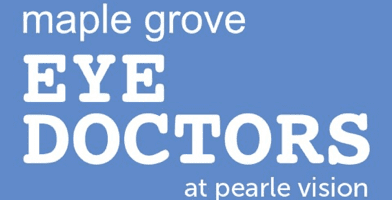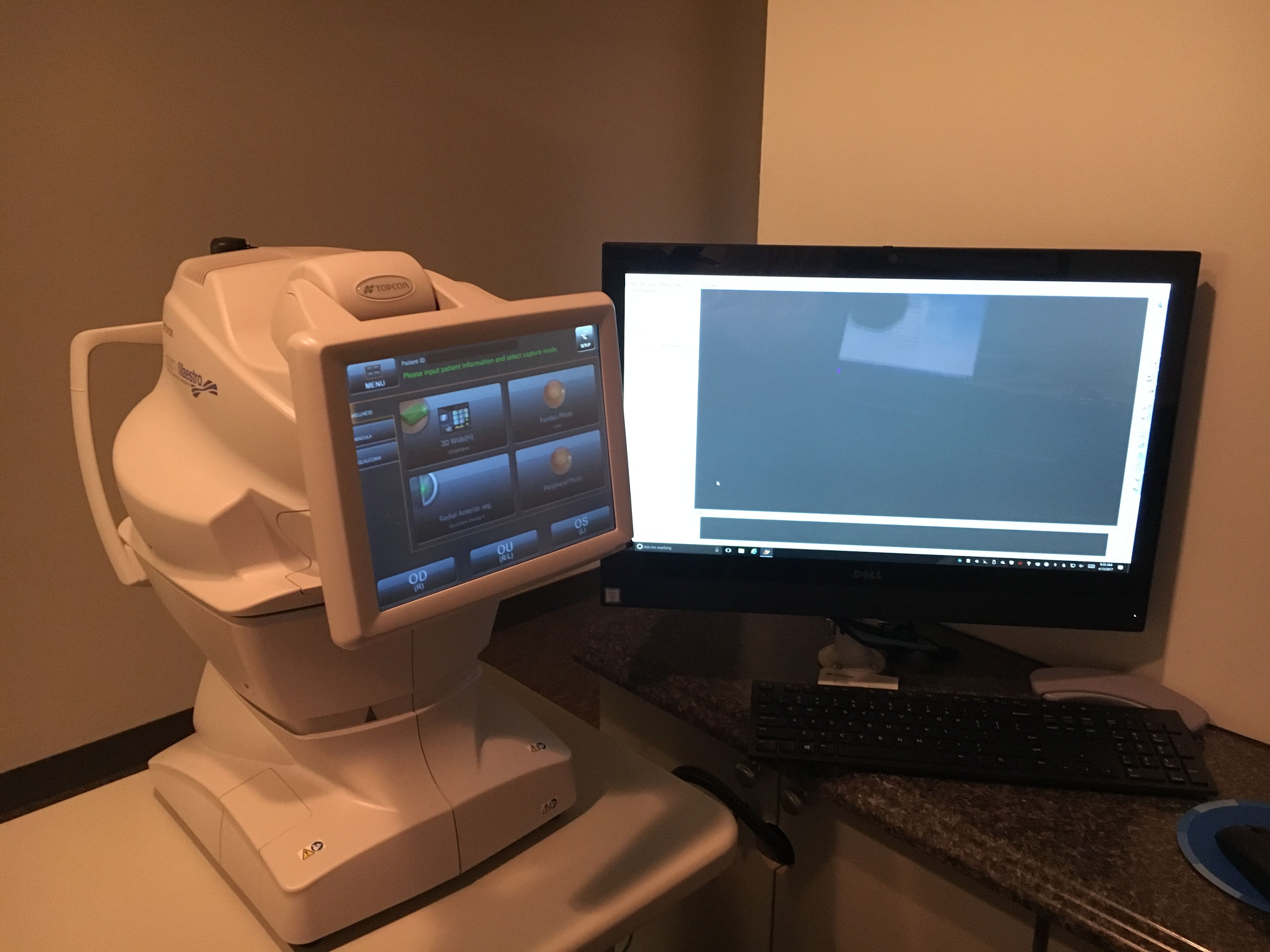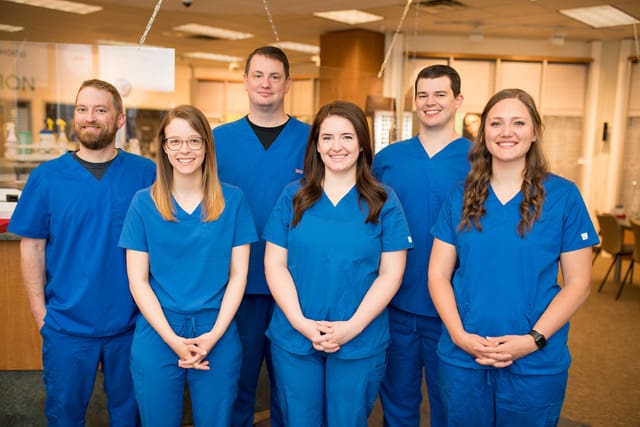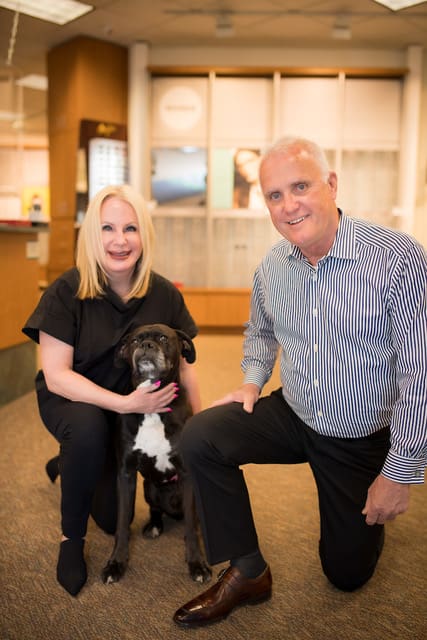The Latest Technology in Eyecare
This week we installed our new state-of-the-art OCT (Ocular Coherence Tomography)! We are constantly upgrading in our business with new ideas, the latest technology for our doctors, and the latest releases of contact lenses, frames, and sunglasses.
Ocular Coherence Tomography or OCT is an advanced eye scan suitable for people of all ages. Similar to ultrasound, OCT uses light waves rather than sound waves to see beneath the surface of the eye. It allows our eye doctors to see the different layers which make up the back of the eye.
Using our 3D OCT camera, our eye doctors can simultaneously take a digital photograph and a 3D cross section scan of the back of your eye. This allows them to instantly diagnose a number of common conditions. The scan is non-invasive, painless and can be completed in 60 seconds or less!
Common conditions identified through regular OCT screening include:
- Age related macular degeneration (gradual breakdown of the central portion of the eye (macula). The OCT can not only identify this condition but also its type – wet or dry, and monitor its progress. AMD is the most common cause of vision loss in those over 50.
- Diabetic Retinopathy is a major cause of visual impairment among adults. OCT examination enables early detection, greatly improving the success rate of treatment.
- Glaucoma damages the optic nerve at the point where it leaves the eye. The danger with glaucoma is that there are no symptoms. An OCT examination will determine if you are at risk, or what stage of glaucoma you may have.
- A macular hole is a small hole in the macula – the part of the retina which is responsible for our sharp, detailed central vision. One cause of a macular hole is vitreous detachment, when the vitreous pulls away from the back of the eye and does not ‘let go’ eventually tearing the retina and leaving a hole. Extreme sun exposure (staring at the sun during an eclipse) can also cause a macular hole to develop.
- Vitreous detachments can easily be diagnosed with an OCT. As we age, the vitreous jelly that takes up the space in our eye can change. It can become less firm and move away from the back of the eye towards the center. In some cases, parts do not detach causing a ‘pulling’ of the retinal surface. The danger of a vitreous detachment is that there is no pain and your eyesight may seem unchanged but the back of your eye may be damaged.
The health of your eyes matters to you and it matters to us too, which is why we are offering this state-of-the-art technology to all of our patients. OCT is a new and completely painless and highly advanced screening system that checks for potentially serious medical conditions.






